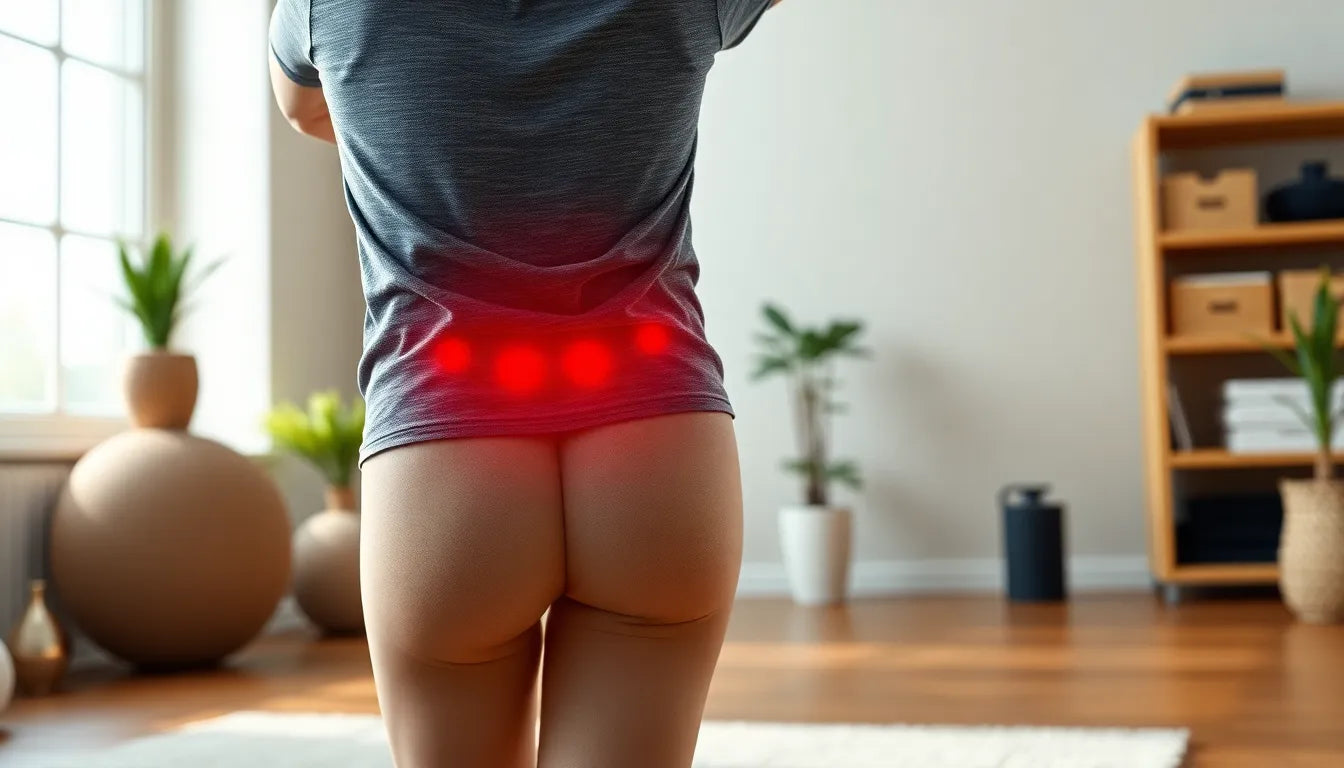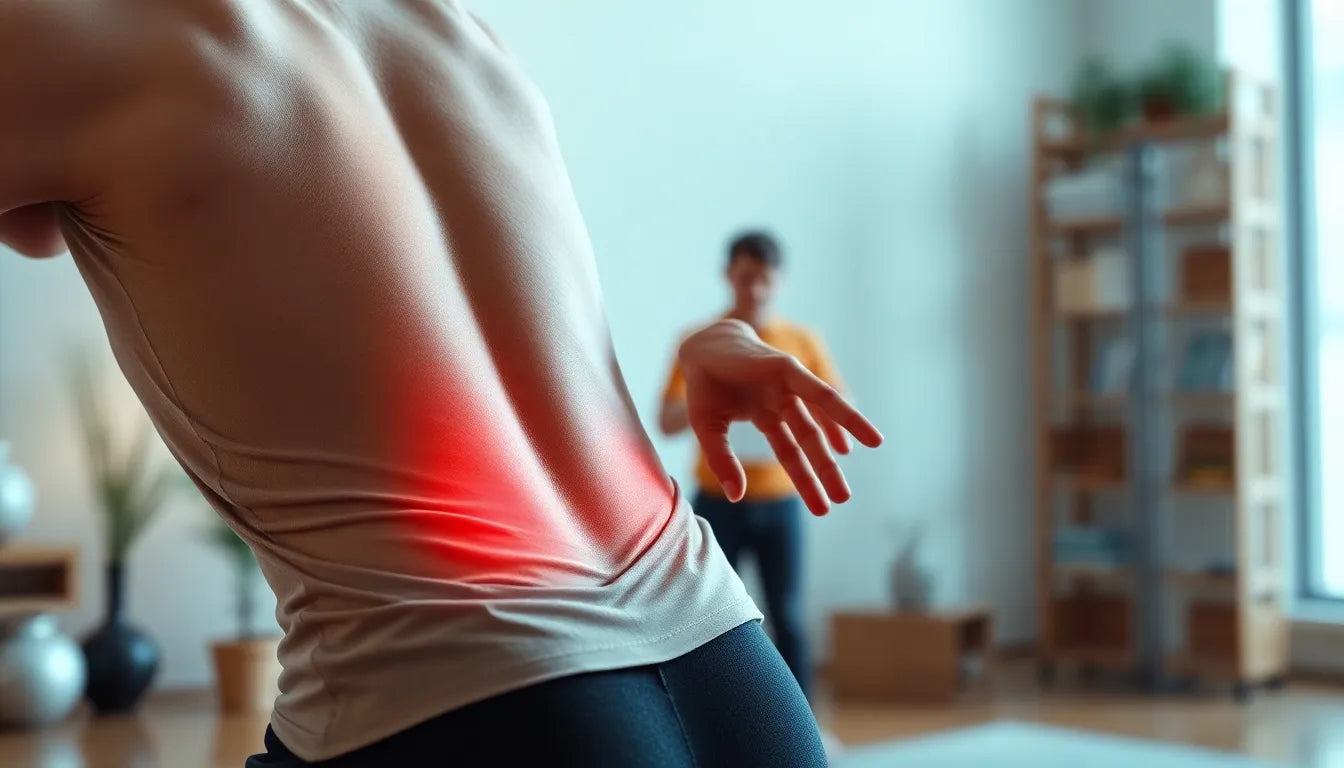Living with a herniated disc can be a daily challenge, marked by discomfort and limited mobility. Understanding the nature of this condition is the first step towards effective management. A herniated disc occurs when the soft, jelly-like center of a spinal disc pushes through a crack in the tougher exterior casing. This can result in nerve irritation, leading to pain, numbness, or weakness in an arm or leg, depending on the disc's location. Common causes include age-related wear and tear, improper lifting techniques, or traumatic injuries. Recognizing and managing the symptoms is crucial to maintaining a good quality of life and preventing further complications.
the role of back support in symptom management
For those grappling with herniated disc symptoms, back support can be a game-changer. Back braces offer a non-invasive solution to alleviate discomfort by stabilizing the spine and restricting excessive movement. This stabilization helps reduce the stress on the affected disc, allowing for symptom relief and improved mobility. By providing support, back braces aid in maintaining proper posture and can prevent further injury, making them a vital component in managing herniated disc pain.

Lumbar support belt
Provides adjustable compression for lower back pain, sciatica, and herniated discs.
purpose of the post
This post aims to guide you through the world of back supports, providing insights into their benefits and features. You'll learn how to choose the right back brace tailored to your specific needs, ensuring that you can manage your herniated disc symptoms effectively. Whether you're seeking pain relief, improved posture, or enhanced spine stabilization, understanding the options available will empower you to make informed decisions about your health. In the following sections, we'll delve deeper into the mechanisms of back braces, explore various types, and offer product recommendations to help you find the best fit for your lifestyle.
mechanism and benefits of back braces for herniated discs
Back braces play a pivotal role in managing herniated disc symptoms by offering structural support and pain relief. These braces work by stabilizing the spine, which helps to redistribute pressure away from the affected disc. This redistribution is crucial as it alleviates stress on the compromised area, reducing pain and facilitating better posture. By limiting excessive or abnormal spinal movements, back braces create an environment that promotes healing and symptom management. Additionally, they support the spine's natural curve, which is essential for maintaining proper alignment and function.
The benefits of using back braces extend beyond immediate pain relief. They help improve posture by encouraging the correct alignment of the spine, which is particularly beneficial for individuals whose herniated discs have led to compensatory postural changes. This improved posture can prevent further injury and enhance overall spinal health, making back braces a valuable tool in both acute and long-term management of herniated disc symptoms.

Men's Posture Shirt™ - Black
Patented shirt designed to activate muscles and improve back posture and comfort.
exploring different types of back braces
When considering back support for herniated discs, it's important to understand the differences between semi-rigid and rigid braces. Semi-rigid braces are designed with flexibility in mind, providing moderate support that allows for some movement while still stabilizing the spine. They are often recommended for individuals who require support during daily activities but do not need complete immobilization.
Rigid braces, on the other hand, offer maximum support and are typically used in more severe cases of herniation. These braces are structured to restrict movement significantly, providing a high level of stabilization that can be critical for healing. The choice between semi-rigid and rigid braces depends on the severity of the herniation and the individual's activity level.
When selecting a back brace, several features should be considered to ensure optimal comfort and efficacy. Adjustable compression is a key feature, allowing users to customize the level of support to their specific needs. Breathable materials are also important, especially for extended wear, as they enhance comfort by preventing overheating. Additionally, braces with double-strap systems and integrated panels offer enhanced stabilization, which can be particularly beneficial for individuals with more severe symptoms.
top product recommendations for back support
Choosing the right back brace can be overwhelming given the variety of options available. To simplify the decision-making process, we recommend considering top brands known for their quality and effectiveness. Bauerfeind, Orliman, and DonJoy are among the leading names in the industry, offering a range of products designed to meet different needs.
For example, Bauerfeind's braces are renowned for their ergonomic design and use of breathable materials, making them ideal for everyday use. Orliman offers braces with advanced support features, such as dual-drawstring systems, which provide customizable stabilization. DonJoy, known for its innovative technology, offers braces that cater to varying levels of herniation severity, ensuring that there's an option for everyone.
When comparing these products, consider key features such as support level, comfort, and price point. A comparison table highlighting these aspects can be a useful tool in making an informed decision. By choosing a brace that aligns with your specific needs, you can effectively manage your herniated disc symptoms and enhance your quality of life.
clinical considerations and professional guidance
While back braces are an effective tool for managing herniated disc symptoms, they should be part of a comprehensive treatment plan. This plan may include physical therapy, medication, and lifestyle modifications, all aimed at promoting healing and preventing further injury. It's essential to consult with healthcare professionals to ensure that you're using the most appropriate brace for your condition.
Healthcare providers can offer personalized recommendations based on the stage and severity of your herniation, ensuring that your back support strategy is tailored to your specific needs. By integrating professional guidance with the use of back braces, you can achieve the best possible outcomes in managing your herniated disc symptoms.
choosing the right back support for herniated discs
Selecting the appropriate back support for a herniated disc involves understanding your specific needs and the severity of your condition. It's crucial to assess the level of herniation and your daily activity to choose a brace that offers the right balance between support and mobility. For those with mild to moderate symptoms, a semi-rigid brace may suffice, providing stability while allowing for some movement. In contrast, individuals with severe herniation might benefit more from a rigid brace that offers maximum support and restricts movement.
Proper fit is essential for the effectiveness of any back brace. Measuring your waist and ensuring a snug yet comfortable fit can prevent further injury and enhance support. Adjustable features, such as compression levels and strap systems, allow for a personalized fit, which is vital for both comfort and efficacy.
integrating back support into daily life
Incorporating back support into your daily routine can significantly impact symptom management and overall quality of life. Consistent use of a back brace, especially during activities that strain the back, can help maintain proper posture and reduce pain. However, it's important to balance brace use with other treatments, such as physical therapy and exercises that strengthen the core and back muscles. This holistic approach can enhance the benefits of back support and promote long-term healing.
User testimonials and case studies often highlight the positive impact of back braces on daily life. Many individuals report improved mobility and reduced pain, enabling them to engage in activities they previously avoided. These real-life experiences underscore the value of back support in managing herniated disc symptoms.
frequently asked questions
Can a back brace cure a herniated disc?
Back braces are designed to provide symptomatic relief by stabilizing the spine and reducing stress on the affected disc. While they are effective in managing pain and promoting better posture, they do not cure a herniated disc. Comprehensive treatment, including physical therapy and medical intervention, is necessary for healing.
How long should I wear a back brace each day?
The duration for wearing a back brace varies based on individual needs and the severity of the condition. Generally, wearing the brace during activities that cause pain or strain is recommended. It's essential to follow healthcare professional guidance to avoid over-reliance on the brace, which can weaken back muscles over time.
Are back braces comfortable to wear?
Modern back braces are designed with comfort in mind, featuring breathable materials and adjustable straps. These features ensure that the brace can be worn for extended periods without causing discomfort. Choosing the right size and fit is crucial to maximizing comfort.
Do I need a prescription to get a back brace?
While many back braces are available over-the-counter, consulting a healthcare professional is advisable to ensure you choose the most appropriate brace for your specific condition. A prescription may be necessary for insurance reimbursement or for accessing specialized braces.
How do I know if a back brace is helping?
Signs that a back brace is effective include reduced pain, improved posture, and increased ability to perform daily activities. If symptoms persist or worsen, it's important to seek further medical evaluation to adjust your treatment plan accordingly.
Källor
- Orthomed. (n.d.). "Best Back Brace for Herniated Disc & Degenerative Disease."
- Elite Medical Supply. (n.d.). "Use the Right Back Brace to Manage or Maintain a Herniated Disc."
- BraceAbility. (n.d.). "Bulging Disc Treatment."
- The Bracing Experts. (n.d.). "Herniated Disc."
- Spine-Health. (n.d.). "When to Consider a Back Brace."
- BioSkin. (n.d.). "Back Braces for Herniated Discs."
- DonJoy Store. (n.d.). "Herniated Disk Back Injuries."
- Walmart. (n.d.). "Back Braces for Herniated Discs."


















